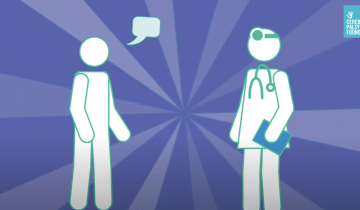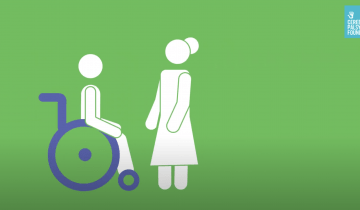We studied how common pain was thought to be due to muscle spasticity in the legs or arms is in children/adolescents with CP.
Dyskinesia is an umbrella term encompassing a range of different movements. These are all movements that can be out of your control. Dyskinesia is very common in cerebral palsy.

Dr. Bhooma Aravamuthan presents Understanding Dystonia: Diagnosis and Treatment at the 2020 AACPDM Community Forum. Moderated by Council Chair, Jen Lyman.
In this 2022 episode of "Let's Talk CP" host Jen Lyman talks with neurosurgeon, Dr. Debbie Song, and physiatrist, Dr. Marcie Ward about their role in the care of Cerebral Palsy at Gillette Children's.

Drooling is an important problem for many individuals with CP and there are a number of interventions available to treat symptoms. If an individual with CP or their caregiver have concerns about drooling it is important to discuss with a health care provider. Care pathways such as the AACPDM pathway can be a starting point for shared decision making. In all cases, working together as a team is important in choosing the best alternative. Children and adults with CP may have trouble with drooling, or saliva management. In the medical world, drooling is referred to as sialorrhea. Saliva plays an important role in eating but also can interfere with airway clearance and breathing, as well as social participation. When drooling has this kind of impact it becomes important to consider intervention.

What do you do when you want to help your child but your local providers don't have the resources? You travel for treatment. In this personal story, Sophia's family describes their experiences traveling to Gillette Children's for treatment, including both neurosurgical and orthopedic surgeries.

Our 3rd Virtual Town Hall featured experts from the Shirley Ryan Ability Lab and Northwestern University in Chicago. This multi-disciplinary panel discussion highlights the latest updates in care of children with #CerebralPalsy.

It is recommended that women start having mammography screenings starting at about the age of 40, and it becomes more difficult to obtain these services if you have a disability.

The findings of this article demonstrate the need for improved screening rates in women with CP, and highlight areas for improving their screening experience.
Spasticity is a condition of muscles that is a velocity resistance to stretch. What that means to a child and to a parent is that if you move the limb slowly, you have a difference than if you move that limb fast. Spasticity restricts movement and it creates a break on the system. It's as if they're trying to move, but they're held back. By treating spasticity, you may improve the range of motion or the action of the movement.


